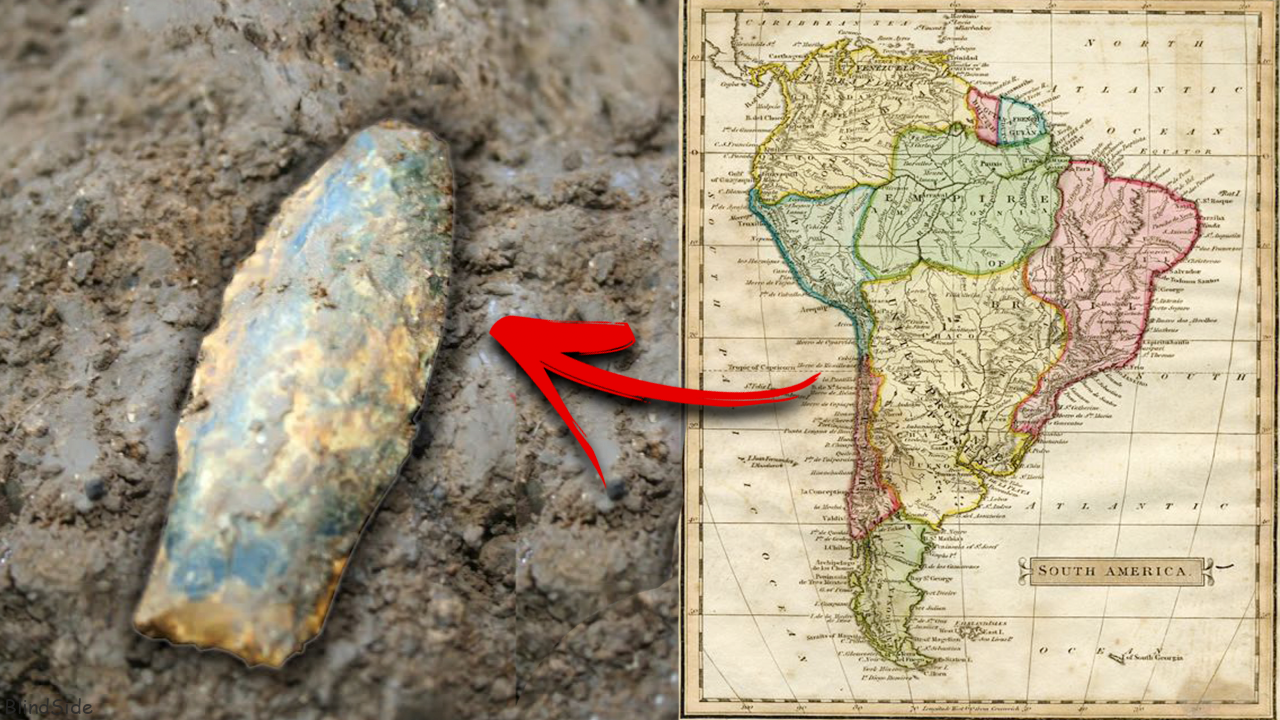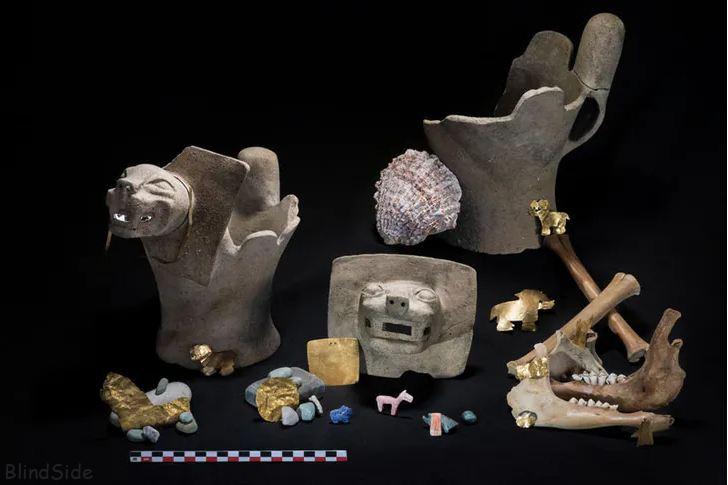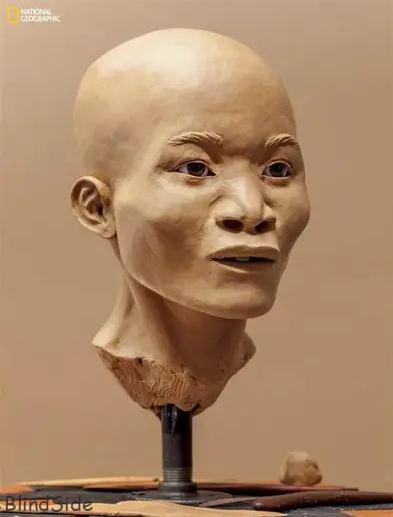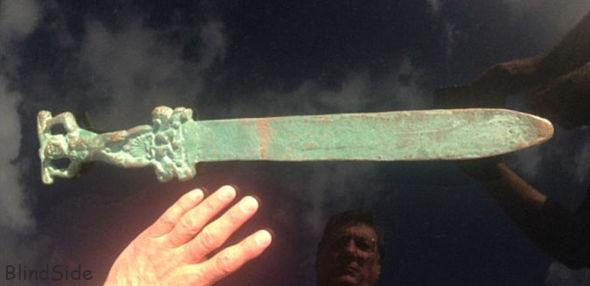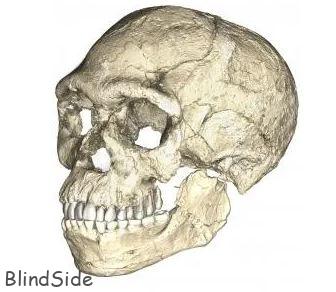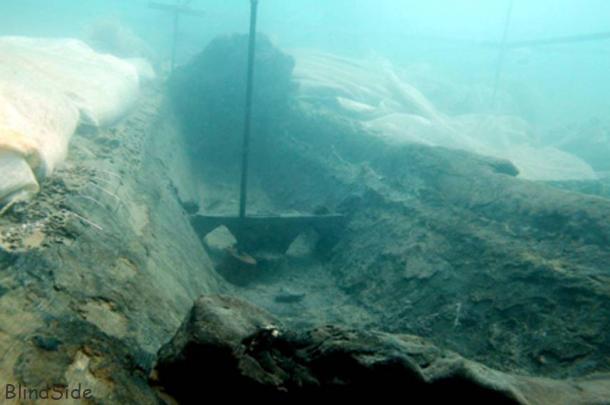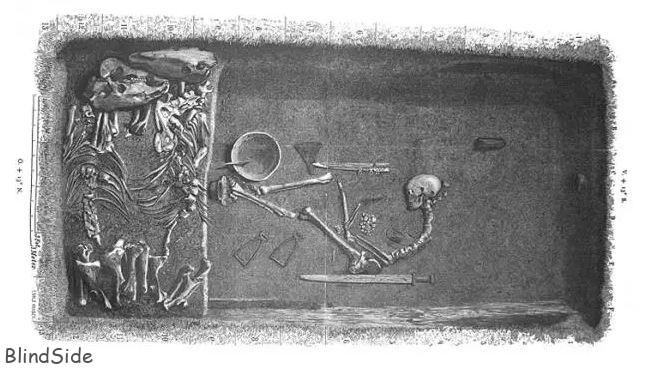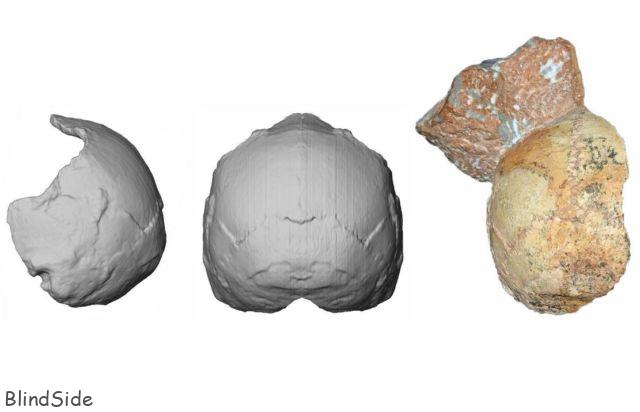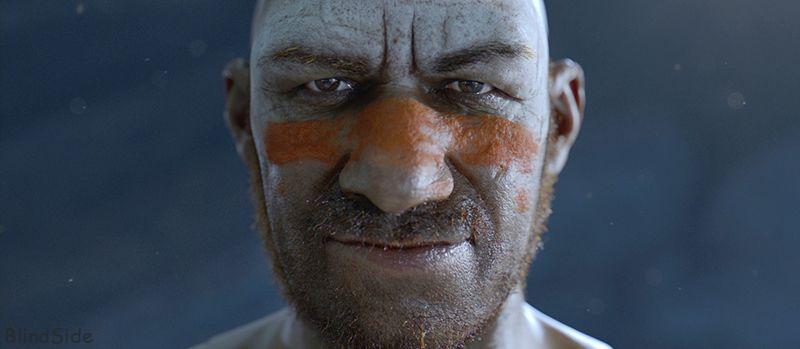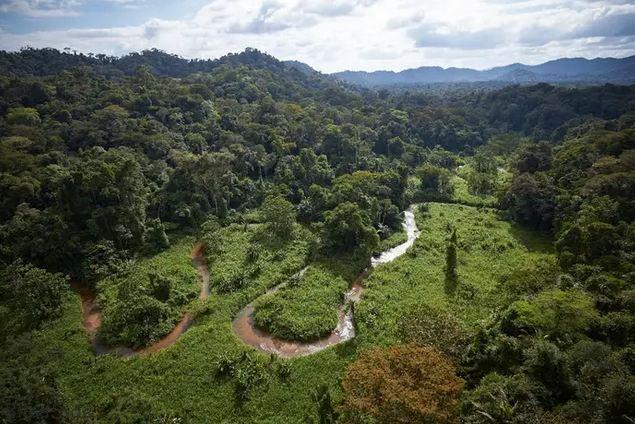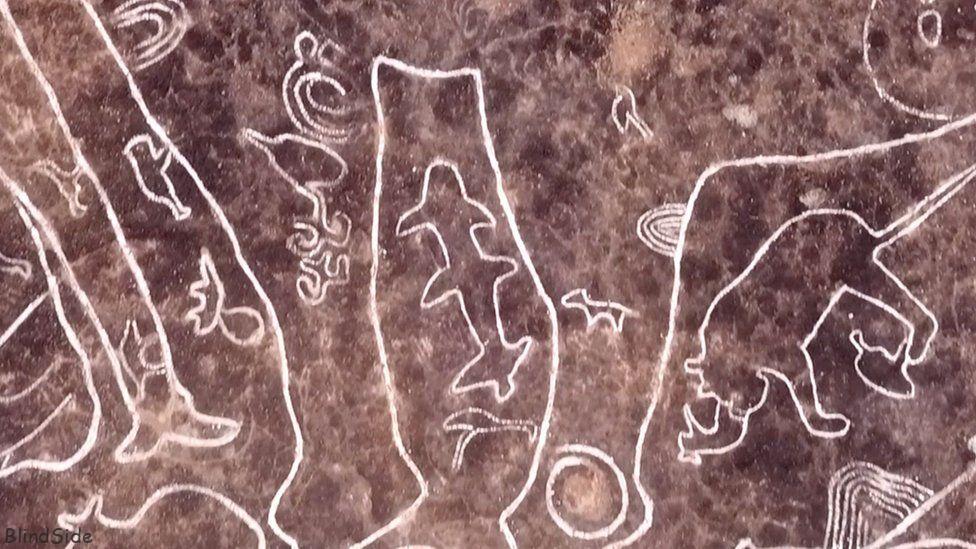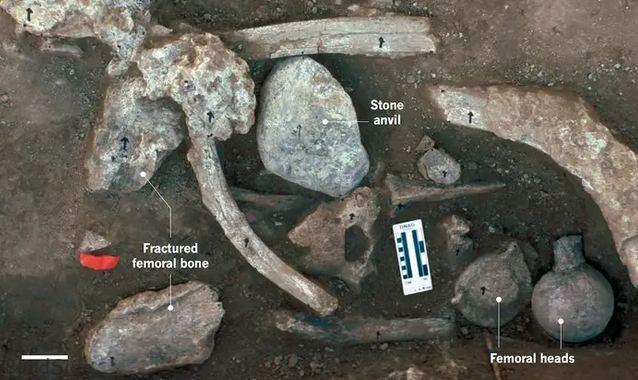History is very rarely questioned, particularly when it comes to who discovered what, and when. Students across the world have been given the same facts in history class for many, many years, but what if, after all these years, historians were wrong?
we are here on the Blind Side will From the ritualistic killing of llamas to the suggestion Christopher Columbus may not have been the first to discover America, 15 Unsettling Discoveries That Might Change History.
15. Artifacts in South America’s Largest Lake
On the border of Peru and Bolivia sits Lake Titicaca. This lake has been the site of some fairly bizarre discoveries over the years, with several marine archaeologists attempting to traverse its rather ominous and daunting dark depths.Within the lake, they uncovered a ceremonial site that was astonishingly well preserved.
After turning their attention to the Khoa Reef, divers found certain ritualistic items submerged approximately 16 feet underwater. Among the items were the carcasses of slaughtered animals, including llamas, and gold ornaments, thought to date back to between the eighth and tenth century.
This was a time when the pre-Inca Tiwanaku people held the lake’s basin. Several centuries prior to the eventual Spanish conquest, the region had a population of almost one million people.
Many have been led to believe that the reason the Tiwanaku people left such valuable items was due to a possible religious sacrifice or other such traditions. To them it may have provided a method to figuratively and literally help their civilization develop and flourish.
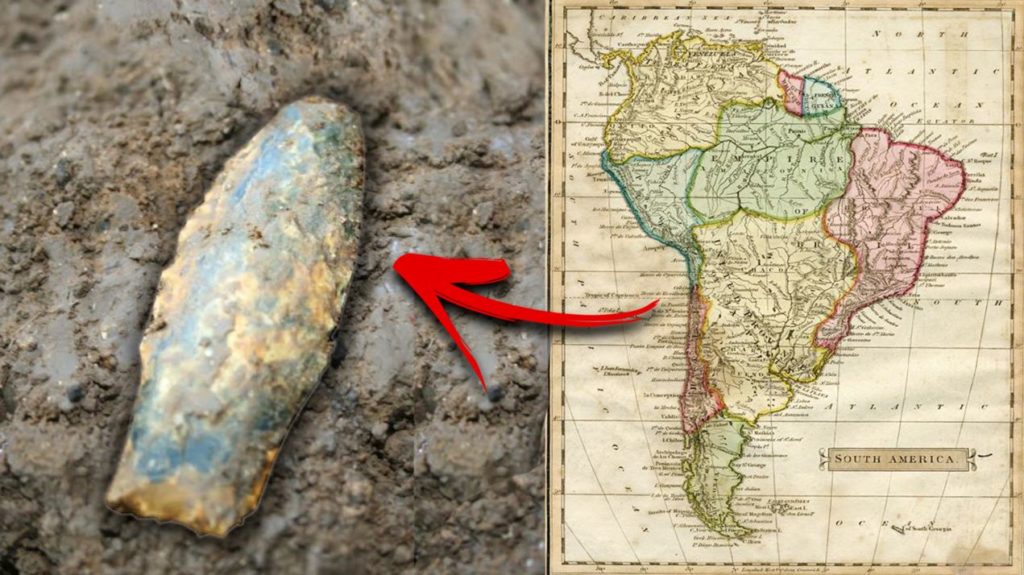
As for this artifact found in this same lake in South America, its actually one of the most interesting finds the divers made, as the material from the object in question seems to have been made with high technology in which it wasnt available back in the day. Which kind of makes these discoveries more interesting than it already is.
14. Who re-discovered America first? Part 1
Africans
By now we’re all familiar with the voyage of Christopher Columbus and his discovery of the “New World” aka the United States.
However, we have now come to discover, there are several possible inaccuracies surrounding these historical events that may well disprove, what was considered, an integral part of American history.
Africa is the first of three possibilities. There are several things that point towards the African people beating Columbus to the punch.
The first of these is drawn from the actual proximity between Africa and South America.
Columbus initially departed from the Spanish port of Palos, heading to the Bahamas.
Upon further inspection of the world map, it can clearly be identified that the distance covered by Columbus in comparison to the distance between Sierra Leone and the Brazilian city Natal, is a far lengthier journey.
The African route is nearly three times shorter than what Columbus allegedly achieved.
Another often-revisited clue comes from the Piri Reis map. According to history, Columbus had no idea that he was heading into a new continent, but the Piri Reis, which was put together in 1513 (fifteen years after Columbus’ voyage) depicts a reasonably accurate state of North Africa and coast of Brazil.
The third clue focuses on Mexico’s ‘Olmec Colossal Heads’, stone sculptures of human heads created from large basalt boulders. These heads are said to depict the Olmecs, or the first inhabitants of the Americas, however, they have a stronger resemblance to Africans.
Finally, a teenage girl whose remains were found in an underwater cave on Mexico’s Yucatan Peninsula, may hold the key to the age-old mystery of who discovered America.
Nicknamed Naia (after the Greek term for a water nymph), it is believed the girl lived 12,000 years ago in Mexico.
Considered one of the earliest known residents of the Americas, her skull bears a striking resemblance to the African or South Pacific population.
Although not definitive proof that Africans re-discovered America before the Europeans did, it certainly makes you wonder.
13. Who re-discovered America first? Part 2
The Romans
What about the Romans? Did they discover America before Columbus? Maybe.
Historians have been very vocal over the slight possibility that ancient mariners stepped foot on American soil well over 1000 years before Columbus’ historic discovery in 1492.
To further add to this theory, scientists from the AAPS (Ancient Artifact Preservation Society) discovered what is believed to be a Roman sword within a shipwreck close to the Oak Island in Canada.
Carvings of soldiers, ancient coins and native plants were also amongst the items discovered.
If this discovery was made and the sword found to be a genuine Roman artifact, then American history could be altered forever.
It may prove that the Roman’s traversed the land an entire millennium before Columbus set foot on American soil.
12. Who re-discovered America first? Part 3
The Chinese
If you didn’t believe that it could be the African’s or the Roman’s; then perhaps it was the Chinese that discovered the historic nation of the red, white and blue.
Author and researcher, John Ruskamp believed he had a case to back this theory up.
He claimed that an ancient Chinese script that had been carved into rocks, could potentially prove a discovery of America by the Chinese, dating back over 3000 years.
Ruskamp linked his theory to the discovery of pictograms from the ancient Chinese Shang Dynasty, which were supposedly etched into rocks on American soil.
These carvings are located in several areas, including New Mexico, Arizona and California.
Ruskamp is confident that the Chinese explored North American land years before any Europeans traversed it. He believed the images carved into the rock were symbolic of the journeys and a gesture of honor toward the Shang King.
The discovery of America has always been known as the work of great Italian explorer and colonizer Christopher Columbus; however, these three theories do leave us with more questions than answers.
11. Pumapunku
Considered a significant piece of ancient history, Pumapunku, sits within a large temple of sorts near Tiwanaku in Bolivia, a site that dates back as far as AD 536.
Tiwanaku forms a large part of Inca traditions and is believed to be the site of the beginning, where the world was born. Pumapunku is very relevant in terms of mysterious ancient sites with frequent visits from historians who are out to try and unravel the hypothesis of advanced prehistoric civilizations or even extraterrestrial involvement.
The area covers a reasonably large portion of the ancient city of Tiwanaku. The structure is very precise with doorways very finely cut and its stone blocks bearing very few chisel marks, all interlocking effectively.
To this day, archaeologists don’t have any drawn conclusions in terms of how these blocks of stone were transported, however a common belief is that the task was accomplished by the unity of the ancient Tiwanaku labor force.
Theories point to the labor force transporting the stones from quarries in Pumapunku, but these are still merely speculative.
Another theory is that the builders of Pumapunku used llama skin ropes and ramps to propel the blocks to site, however, it is easy to see why this theory isn’t widely accepted when you take into account that they weighed close to 131 metric tons. It seems more than a little farfetched that they could manage this feat with the resources they had at the time.
10. Homo Sapien Fossils May Rewrite History
A strange, yet fascinating discovery suggests our species came into existence in multiple locations, and more than 100,000 years earlier than initially thought.
Jebel Irhoud is a site near Marrakesh that has been thoroughly researched over a period of 10 years to prove the theory.
Fossils were discovered at the site by researchers and they are now believed to be the earliest remains of the homo sapiens.
Following this discovery, paleoanthropologist Jean-Jacques Hublin undertook further study, with his findings suggesting a much earlier emergence of the human species than what was first thought. He also believed that this was a far more widespread process.
Until now, it was deemed that the oldest known homo sapien remains were located in Ethiopia. This was in the 1960’s where Richard Leakey and his team uncovered a couple of partial skulls, thought to be around 195,000 years old.
However, Hublin and his team have determined that these fossils from the Jebel Irhoud are close to 300,000 years old and are connected to five different former individuals.
Scientists Chris Stringer and Julia Galway-Witham have since compared the fossils from Jebel Irhoud to the neanderthal, homo erectus and other fossil types including the modern homo sapien. They saw that the Jebel Irhoud fossils facially resembled humans far more than any of the others available to them.
Does our ancestry date back further than once thought? Stay tuned.
9. Ingots from the legendary Atlantis
Atlantis is such a heavily debated topic and has been for so many years. Does it really exist?
It’s a difficult subject as scientists and archaeologists have been at the forefront for decades attempting to either prove or disprove the theory.
An intriguing find by diver Franco Cassarino is certain to strike up further debate among those in his field. Whilst diving near the coast of Gela in Sicily, he found, what was believed to be, a 2000-year-old shipwreck. Lying underneath the wreck on the sea floor were 39 ingots.
Experts have since proven that the ingots were made up of orichalcum, which is a rarity caused from the fusion of molten rocks. There have been claims by archaeologists that this discovery proves the existence of the hidden underwater nation.
According to the Greek philosopher Plato, this orichalcum was incredibly valuable and may have been found in pieces of the still rather absent and mysterious, Atlantis.
8. Oldest Tools Outside Africa
Almost a hundred stone tools that were found at the Shagchen site, located in central China, could be enough to push back the spread of our ancient hominins from Africa by more than 200,000 years.
The makers of said tools were living in Shangchen for certain periods during an 800,000-year span. They are said to have left behind many tools that were unprecedented outside of Africa. The oldest of the tools on site were closer to 300,000 years older than Dmanisi. This was another site that was around 1.8 million years old based in the Republic of Georgia. a site well known for containing some of the oldest homo erectus fossils.
“Finding artifacts that you knew were around two million years old—and therefore the oldest outside Africa—was for me, as a paleoanthropologist, really exciting,” were the words from study co-author Robin Dennell, a professor at the University of Exeter, upon finding them.
“More people have climbed Everest than found stone tools that old.”
The discovery suggests ancient humans traversed incredibly large distances earlier than previously thought, possibly as far as 14,000 kilometers on occasion.
What remains a mystery, however, is the identity of those behind the tools creation all those years ago.
7. Women Viking Warriors
Within the Viking societies, women gained a great deal of respect and independence.
Scandinavian lore is rich with legends of female warriors and poetry from the middle ages.
Stories like this have also been present in the modern era as well, although this is often challenged in official history. Women were often relegated back to a non-combat role, with men assuming the role of the Viking warrior.
Treasure troves of weapons and paraphernalia located within their skeletons left very little in terms of questioning the gender of these supposed fighters.
The Birka Warrior grave, located in Sweden, holds the remains of a female warrior from the 10th century. This grave provided the first archaeological evidence that women were of high status within Viking culture.
Individuals at the Stockholm and Uppsala universities finalized this through some remarkable research. A DNA analysis was carried out on the skeleton, which confirmed that it was indeed a woman, over the age of thirty and stood around 5 feet and 6 inches.
According to Professor Mattias Jakobson, this was indeed the first formal and genetic confirmation of a female Viking warrior.
The skeletal remains of the Solar Warrior, another female fighter, was located in a graveyard in Solor, Norway. Her remains are now preserved in Oslo’s Museum of Cultural History with a range of deadly weapons, that were found alongside her body.
6. New mini human discovered
A human species that stood around four foot was discovered in a Philippines cave in 2019.
Further inspection of the Homo Luzonensis’ fossils, determined that it had lived about 50,000 years ago, and now begs the question as to whether our process of evolution might not be all that set in stone.
Professor Rainer Grün, Director of Griffith’s Australian Research Centre for Human Evolution, experimented with uranium to date the teeth and bones from three small hominid individuals found in Callao Cave in the Northern Philippines.
The fossils appear to be the earliest known human remains in the Philippines, preceding the first homo sapiens who were believed to have existed 30,000 to 40,000 years ago.
This discovery really flips the script on human evolution as it challenges the old adage that the human’s line progressed from less advanced to the far more advanced humans we are today.
5. A 210,000-year-old skull discovered in Mani
A skull found in Mani, Greece, is believed to be the oldest example of a modern man in Eurasia.
The 210,000-year-old skull is an important find, as it may reshape the story of how human species spread to Europe. It may also reshape theories of the human story as a whole
The fossil originated from the site of Apidima, southern Greece and was found together with another human fossil, Apidima 2, during research by the Museum of Anthropology of the University of Athens in the late 1970s.
The research team applied a novel, cutting edge approach, including virtual reconstruction of the damaged parts of the skulls.
It conducted numerous comparisons with different human fossils and used a highly accurate radiometric dating method to determine their age.
The results of the experiments suggest that there were two separate groups of people that lived in Middle Pleistocene, or what is now known as southern Greece. These groups were an early population of homo sapiens, with a group of Neanderthals later emerging.
This supports the hypothesis that early modern humans spread out of Africa, where they evolved multiple times.
4. Denisovan and Neanderthal Hybrid
According to genome analysis of a bone discovered in a Siberian cave, a female that was half Neanderthal and half Denisovan, lived on the earth approximately 90,000 years ago.
Scientists were able to identify that the individual belonged to the distinct human group, by using this type of analysis, a truly remarkable feat, and the first of its kind.
Further research was conducted and showed that the Denisovans were a sister group of the Neanderthals, splitting from a common ancestor some 390,000 years ago. They are said to have lived around 40,000 years ago, about the time Neanderthals were beginning to die out
The study suggested that interbreeding may have been responsible and much more common than initially thought within the ancient world.
3. City of the Monkey God
Yet another mysterious lost city has been discovered, following an expedition to the Honduras.
The team of archaeologists carried out the expedition in the hopes of finding the ‘White City’ or the ‘City of the Monkey God’.
They surveyed the area extensively, looking for anything that might belong to a, once thriving culture, that vanished a thousand years ago.
Whilst there, the archaeologists discovered an extraordinary assembly of plazas, earthworks, mounds, and stone sculptures that had laid untouched since the city was abandoned.
In comparison to the nearby Maya, this lost city has barely been studied, remaining a virtual unknown, with archaeologists not even having a name for it
Abandoned many years ago, the site has been left in pristine condition, undisturbed and quite unique.
2. Lost Civilization in India
Archaeologists have been left excited following the discovery of ancient rock carvings in the western state of Mathrashtra, India.
Believed to be tens of thousands of years old, the carvings might hold some explanation of what could be a never before discovered and unknown civilization.
The rocks mainly depict images and symbols in relation to various animals, birds, humans and other possible geometrical designs.
The petroglyphs that have been drawn hold some similarities to those found in other areas around the globe. This has led to experts considering the possibility that these were brought about during prehistoric times and quite possibly among some of the oldest ever discovered.
Dr Shrikant Pradhan, a researcher and art historian at Pune’s Deccan College who has studied the petroglyphs closely, said that the art was like that found in other parts of the world, and clearly inspired by things observed by people at the time.
With the types of animals depicted within the petroglyphs, including hippos and rhinos, not considered natives of this part of India, did the people who created them migrate from there, or did historians get it wrong, and these animals did once live in such terrain?
1. The True First Americans
For decades, scientists have generally accepted the date of the arrival of humans in the Americas, around 25,000 years ago.
This timeline has now been disputed as incorrect, following the finding of somewhat controversial evidence by researchers at an archaeological dig.
The site runs along the 54 freeway in San Diego, California, and researchers believe they found evidence of a human presence that predates previous estimates of inhabitants in North America, by 100,000 years.
If this were to be true, it would shake things up a bit for archaeologists around the globe.
The proposed timeline revision is based on a set of 130,000-year old mastodon bones and teeth, first unearthed in the 1990’s. The remains of the enormous extinct creature, with similar features to today’s elephant, showed signs of being processed by humans.
Bone fragments are said to have shown typical patterns of decay in keeping with their age, and fractures that appear to have occurred shortly after the animal died.
This signals that something other than the natural processes of decay were at work.
Furthermore, the mastodon remains don’t appear to have been buried alone, with researchers finding bones that have been fashioned into hammer-stones and anvils. These tools are linked to early African humans who inhabited the earth as far back as 1.7 million years ago.
Richard Fullagar, an Australian archaeologist said the site has provided remarkable evidence, allowing researchers to identify the exact hammer that was hit on a particular anvil.
All the data gathered points to indisputable evidence that humans were roaming the earth at the same time as this mastodon died.
There are so many interesting historical facts that have followed us throughout our lives, like the simple fact of how humans first emerged. How would you feel if this fact was called into question? Did our ancestors exist more than 100,000 years earlier than previously thought? And, if so, what difference does it make?
